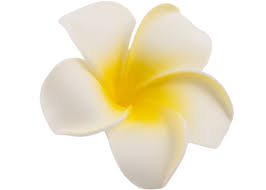
Porcelain flowers, also known as Hoya plants, not only contribute to the beauty of indoor and outdoor spaces but also have a significant impact on the environment. Understanding their influence on the ecosystem is essential for appreciating their role in sustainable gardening practices and environmental conservation efforts.
1. **Air Purification**: Porcelain flowers are renowned for their ability to purify the air by filtering out harmful pollutants and toxins. Through the process of photosynthesis, they absorb carbon dioxide from the atmosphere and release oxygen, improving air quality and creating a healthier indoor environment. Additionally, Hoya plants have been found to absorb volatile organic compounds (VOCs) such as formaldehyde and benzene, which are commonly found in indoor air from household products and furnishings. By incorporating porcelain flowers into indoor spaces, individuals can enhance air quality and promote respiratory health for occupants.
2. **Habitat for Wildlife**: Porcelain flowers provide valuable habitat and resources for wildlife, including pollinators such as bees, butterflies, and moths. The nectar-rich flowers attract pollinating insects, which play a crucial role in the reproductive success of flowering plants. By supporting pollinator populations, porcelain flowers contribute to biodiversity conservation and ecosystem resilience. Additionally, Hoya plants with trailing vines and dense foliage offer shelter and nesting sites for small birds and insects, further enhancing the habitat value of these botanical treasures.
3. **Water Conservation**: Many species of Hoya plants are adapted to arid or semi-arid environments and have evolved mechanisms to conserve water efficiently. Their thick, succulent leaves store moisture, allowing them to withstand periods of drought and limited water availability. By cultivating drought-tolerant porcelain flowers in gardens and landscapes, individuals can reduce water consumption and promote sustainable water management practices. Additionally, the use of mulch and organic matter around Hoya plants helps retain soil moisture and reduce evaporation, further supporting water conservation efforts.
4. **Soil Stabilization**: The extensive root systems of porcelain flowers play a vital role in soil stabilization and erosion control, particularly in sloped or disturbed landscapes. Hoya plants with trailing vines and adventitious roots help bind soil particles together, preventing erosion and soil loss caused by rainfall, wind, or human activity. By planting porcelain flowers in gardens, parks, and green spaces, individuals can help mitigate soil erosion and promote soil health, contributing to the resilience of terrestrial ecosystems.
5. **Carbon Sequestration**: Like all green plants, porcelain flowers contribute to carbon sequestration by absorbing carbon dioxide from the atmosphere during photosynthesis and storing it in their tissues. While individual Hoya plants may have a relatively small impact on carbon sequestration compared to large trees or forests, their cumulative effect can still make a meaningful contribution to mitigating climate change. By incorporating porcelain flowers into urban landscapes and green infrastructure projects, communities can enhance carbon sequestration and reduce greenhouse gas emissions in urban environments.
In summary, porcelain flowers play a multifaceted role in the environment, providing benefits such as air purification, habitat for wildlife, water conservation, soil stabilization, and carbon sequestration. By cultivating and appreciating these botanical treasures, individuals can contribute to the health and resilience of ecosystems while enjoying their beauty and aesthetic appeal in indoor and outdoor settings.
**Sustainable Cultivation Practices**: Another aspect of the environmental impact of porcelain flowers lies in their cultivation practices. Sustainable gardening methods can further minimize the ecological footprint of growing Hoya plants:
1. **Organic Gardening**: Embracing organic gardening practices reduces reliance on synthetic fertilizers, pesticides, and herbicides, which can have harmful effects on soil health, water quality, and biodiversity. By opting for organic fertilizers and natural pest control methods, gardeners can cultivate porcelain flowers in an environmentally responsible manner, minimizing negative impacts on the ecosystem.
2. **Water-Efficient Irrigation**: Implementing water-efficient irrigation techniques such as drip irrigation, rainwater harvesting, and xeriscaping helps conserve water and reduce water wastage in Hoya plant cultivation. By optimizing irrigation practices to match the water requirements of porcelain flowers and utilizing water-saving technologies, gardeners can minimize water consumption and promote sustainable water management in gardens and landscapes.
3. **Companion Planting**: Companion planting involves growing Hoya plants alongside companion plants that mutually benefit each other by attracting beneficial insects, improving soil fertility, and enhancing pest resistance. By selecting compatible companion plants such as native wildflowers, herbs, or flowering shrubs, gardeners can create biodiverse and resilient ecosystems that support the health and vitality of porcelain flowers while minimizing the need for chemical inputs.
4. **Habitat Restoration**: Incorporating porcelain flowers into habitat restoration projects can help revitalize degraded ecosystems and promote biodiversity conservation. By planting Hoya species native to specific regions and habitats, conservationists can restore native plant communities, enhance wildlife habitat, and improve ecosystem resilience in degraded landscapes. Habitat restoration initiatives involving porcelain flowers contribute to the preservation of indigenous flora and fauna, fostering ecological balance and sustainability.
5. **Community Engagement**: Engaging communities in Hoya plant conservation and stewardship initiatives raises awareness about the importance of preserving native plant species and ecosystems. By organizing educational workshops, community plantings, and habitat restoration events, environmental organizations and gardening groups can empower individuals to take action to protect porcelain flowers and their natural habitats. Community involvement fosters a sense of environmental stewardship and collective responsibility for safeguarding biodiversity and promoting sustainable land management practices.
In summary, the environmental impact of porcelain flowers encompasses various aspects of their cultivation, usage, and conservation. By adopting sustainable cultivation practices, supporting habitat restoration efforts, and engaging communities in environmental stewardship initiatives, individuals can minimize the ecological footprint of porcelain flower cultivation and promote their conservation for future generations to enjoy.